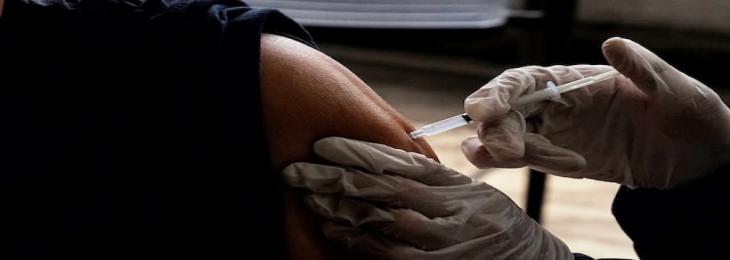
These results' suggest that second mRNA COVID-19 vaccine booster doses conferred greater protection against severe COVID-19 outcomes over first booster doses among nursing home residents during a time of developing Omicron variants,' researchers said.
The study compared nursing home patients who got a second dosage of the first mRNA booster to those who did not, and the results were published in the Centers for Disease Control and Prevention's Morbidity and Mortality Weekly Report. The BA.5 omicron subvariant developed around this time and gained prominence in the US.
To avoid serious COVID-19 outcomes, facilities should continue to make sure nursing home patients are up to date on their COVID-19 vaccinations, including bivalent vaccine booster doses.
The COVID-19 response coordinator for the White House, Ashish Jha, praised the study's conclusions.
This is why we're so committed to making sure everyone receives the most recent vaccination, especially the high-risk population, Jha tweeted.
Many of the individuals in this research would now be eligible to get the bivalent omicron-specific COVID-19 booster if they had not recently received another vaccination or become infected with the virus.
At the end of August, the revised photograph was approved.
In an effort to prevent another spike in coronavirus infections throughout the autumn and winter, the White House has strongly advised eligible persons to receive the bivalent booster. Since the dosage was authorised before a comprehensive human research was finished and both Pfizer and Moderna submitted animal data, as is customary with yearly flu vaccines, there has been some doubt about it.These results' suggest that second mRNA COVID-19 vaccine booster doses conferred greater protection against severe COVID-19 outcomes over first booster doses among nursing home residents during a time of developing Omicron variants,' researchers said.
The study compared nursing home patients who got a second dosage of the first mRNA booster to those who did not, and the results were published in the Centers for Disease Control and Prevention's Morbidity and Mortality Weekly Report. The BA.5 omicron subvariant developed around this time and gained prominence in the US.
To avoid serious COVID-19 outcomes, facilities should continue to make sure nursing home patients are up to date on their COVID-19 vaccinations, including bivalent vaccine booster doses.
The COVID-19 response coordinator for the White House, Ashish Jha, praised the study's conclusions.
This is why we're so committed to making sure everyone receives the most recent vaccination, especially the high-risk population, Jha tweeted.
Many of the individuals in this research would now be eligible to get the bivalent omicron-specific COVID-19 booster if they had not recently received another vaccination or become infected with the virus.
At the end of August, the revised photograph was approved.
In an effort to prevent another spike in coronavirus infections throughout the autumn and winter, the White House has strongly advised eligible persons to receive the bivalent booster. Since the dosage was authorised before a comprehensive human research was finished and both Pfizer and Moderna submitted animal data, as is customary with yearly flu vaccines, there has been some doubt about it.
Recently, Pfizer and Moderna submitted requests for permission from the Food and Drug Administration to give their vaccines to younger groups. While Moderna's bivalent booster is now only approved for adults, Pfizer's is approved for youngsters as young as 12.
Recently, Pfizer and Moderna submitted requests for permission from the Food and Drug Administration to give their vaccines to younger groups. While Moderna's bivalent booster is now only approved for adults, Pfizer's is approved for youngsters as young as 12.






